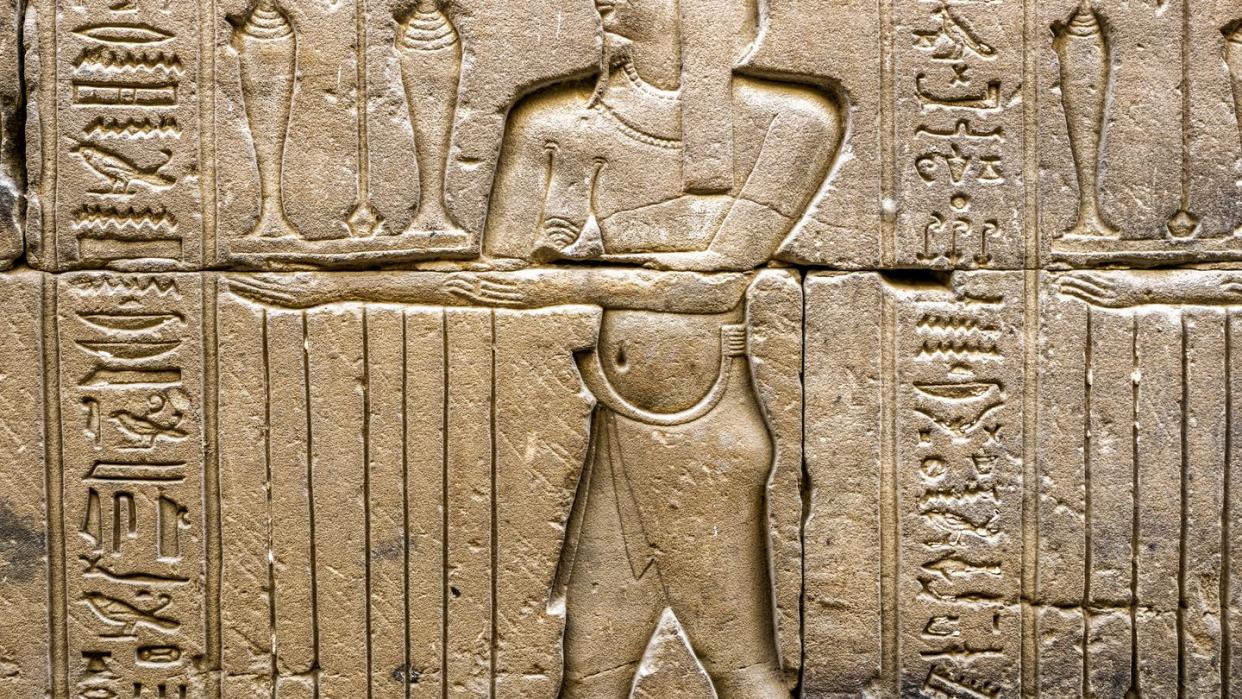At Least 30 Egyptian Tombs Have Reappeared—and Archaeologists Are Astounded

Archaeologists discovered an additional 30-plus ancient Egyptian tombs carved into a hillside overlooking the Nile.
The mummies inside reveal families buried together, with many having died young.
The tombs were created using multiple levels, and experts expect to find more graves.
There are a few questions coming from an archaeological dig on a hillside along the Nile River near the ancient Egyptian city of Aswan. The biggest, though, is exactly why two mummies were glued together inside the same stone coffin.
During a joint Italian and Egyptian archaeological mission working in the vicinity of the Aghakhan Shrine west of Aswan, the team explored the multi-level structure crafted into the hillside. Originally discovered outside of official channels—read: during illegal excavations—the government stepped in and took control.
The joint group dated the site to from 332 B.C. to 395 A.D., somewhere in the late Greek and Roman periods. Ayman Ashmawi—head of the Egyptian archaeological sector of the Supreme Council—said in a news release that the group found what equates to 33 graves, and as many as 40 percent of the remains were from those who died either as newborns or within their first couple of years. They also started discovering some more incredible things, such as the 10-level tomb still containing oil lamps that were potentially left behind by mourners.
“We can imagine how spectacular it was when, for example, during the [mourners’] feast, all these tombs were illuminated,” Patrizia Piacentini—Egyptologist and archaeologist at the University of Milan who led the effort at the site—told Live Science.
Believed to be family graves based on the range of ages of the deceased, the site was likely in use for around 900 years, Piacentini said.
The team discovered several mummies, including two bodies glued to each other inside a stone coffin. The team plans to study the pair to find out their relationship, said Abdul Moneim Saeed, the director of the archaeological mission for the Egyptians.
The team was also puzzled by the presence of colored cardboard and certain forms of burnt clay, stones, wooden coffins, and sacrificial tables. They plan to continue analyzing the finds, but according to Saeed, the artifacts already show that the middle class of Aswan islanders were probably buried in the lower section of the tomb, while the upper portion of the multi-level structure was reserved for the well-off classes. Some tombs were near an open courtyard surrounded by walls of milk brick, and others were carved directly into mountain rock.
Early analyses have revealed that some of those buried in these tombs died from infectious diseases, while others suffered from osteoarthritis disorders or malnutrition. One entire family was potentially killed by a bout of tuberculosis. Further investigation into the remains may reveal additional details about the types of diseases present—and how infectious they were—in the region at that time.
“It was a rich place, an important place,” Piacentini said. “All the people who intended to make trade between Northern Africa and subtropical Africa, this was the place [for them] and it was a place for all the history of ancient Egypt.”
She added in a statement that work will continue at the location, as experts believe there’s plenty more to find. Plus, they still have the question of the gluing.
You Might Also Like


